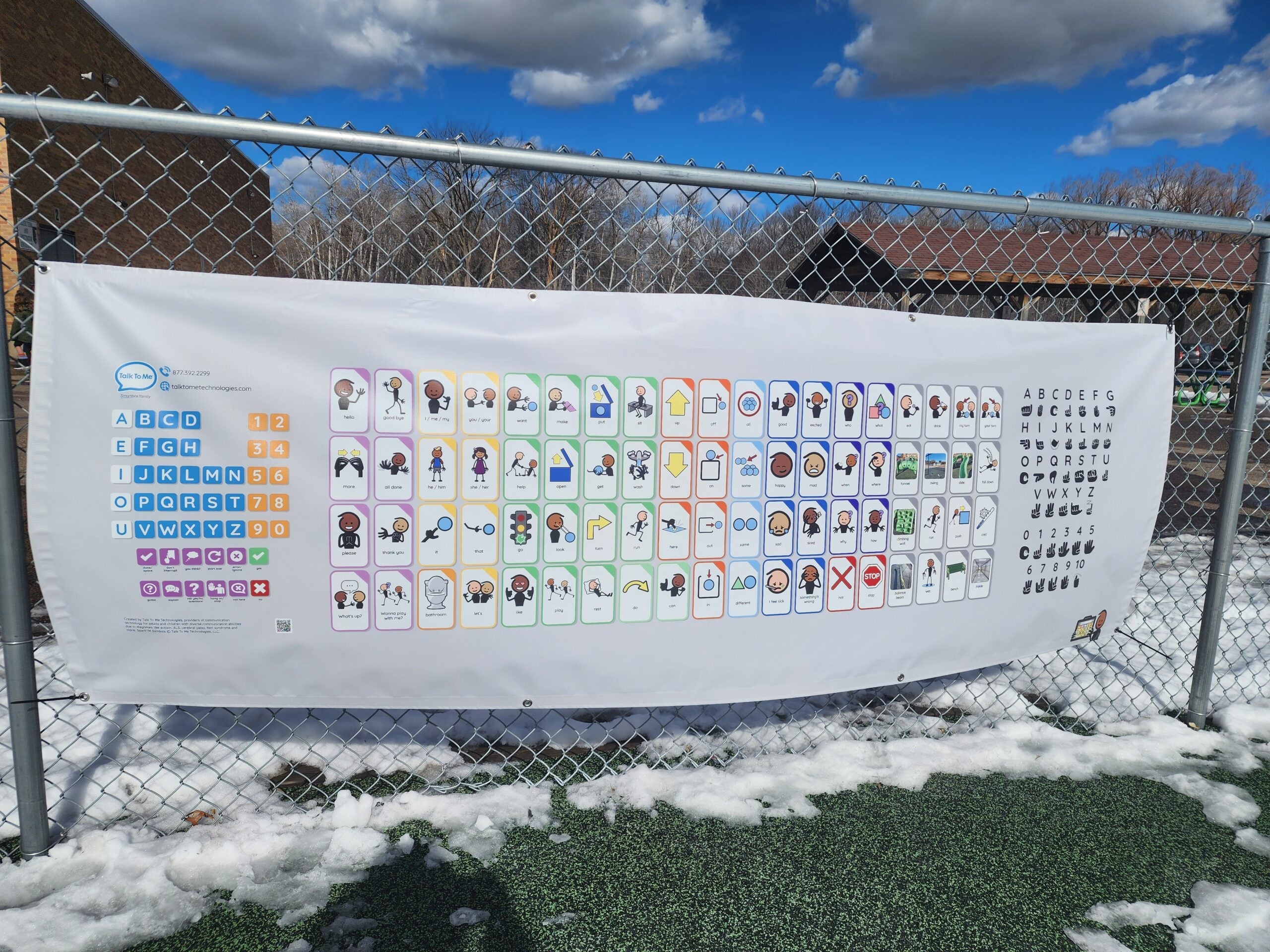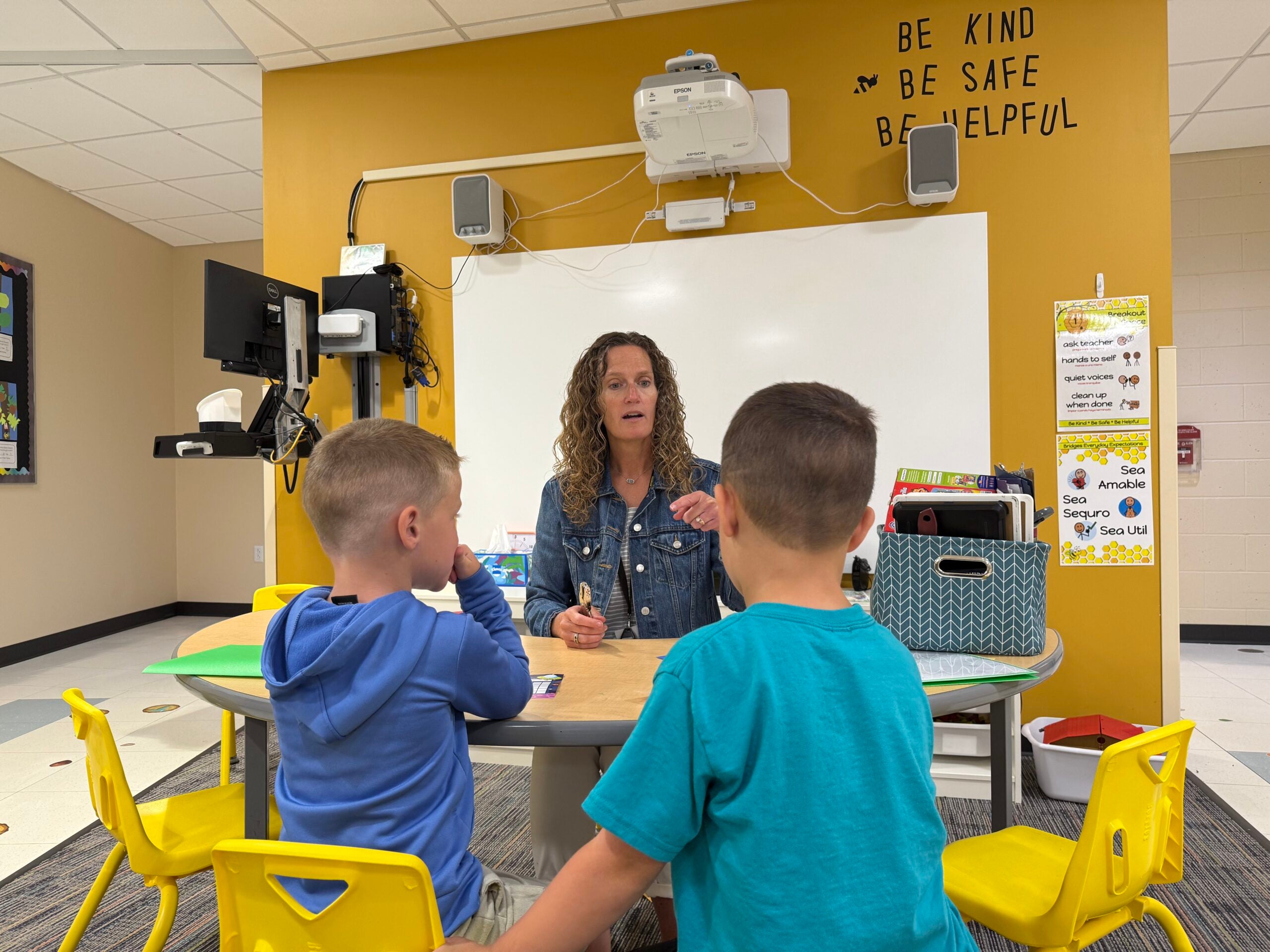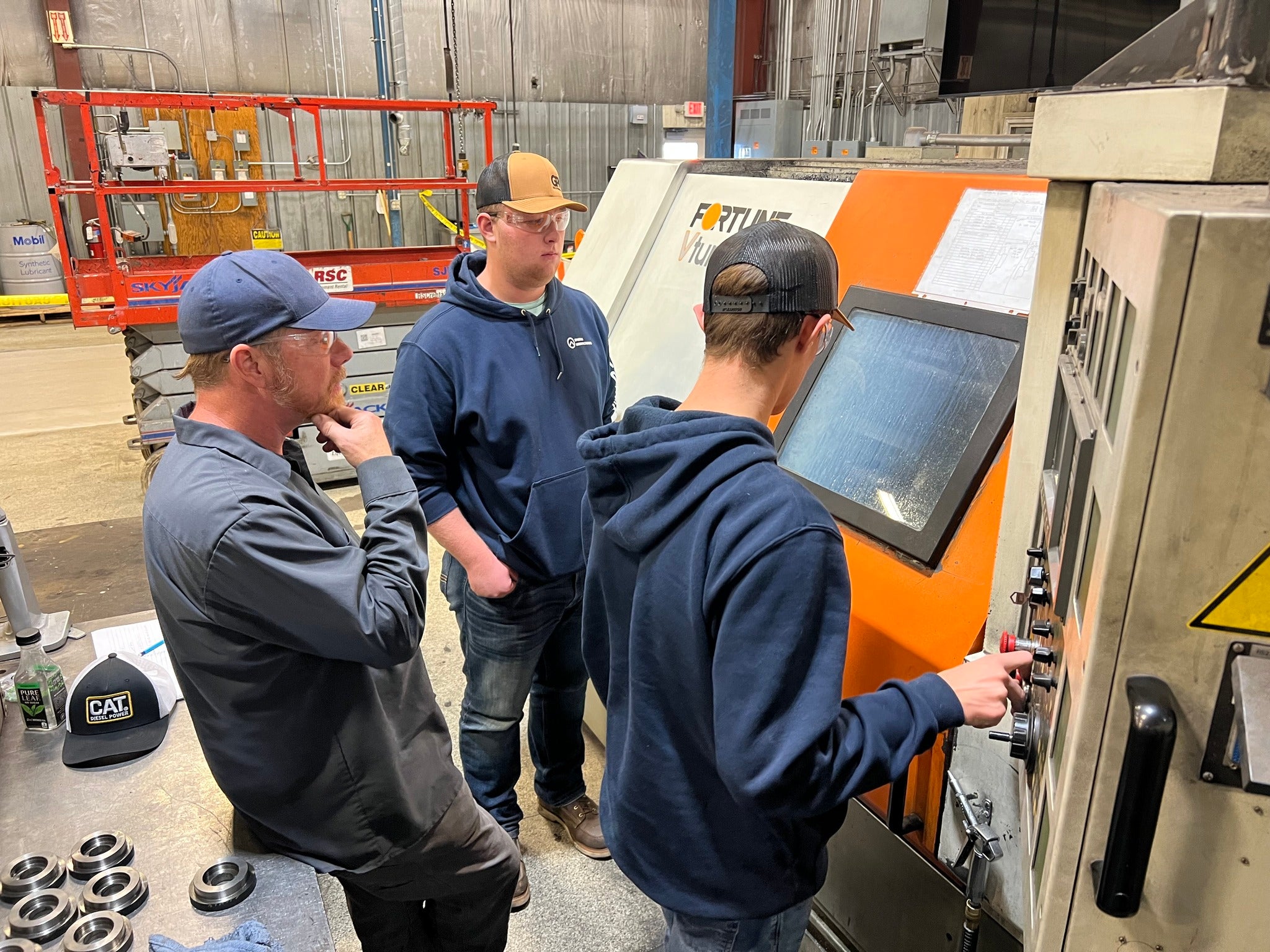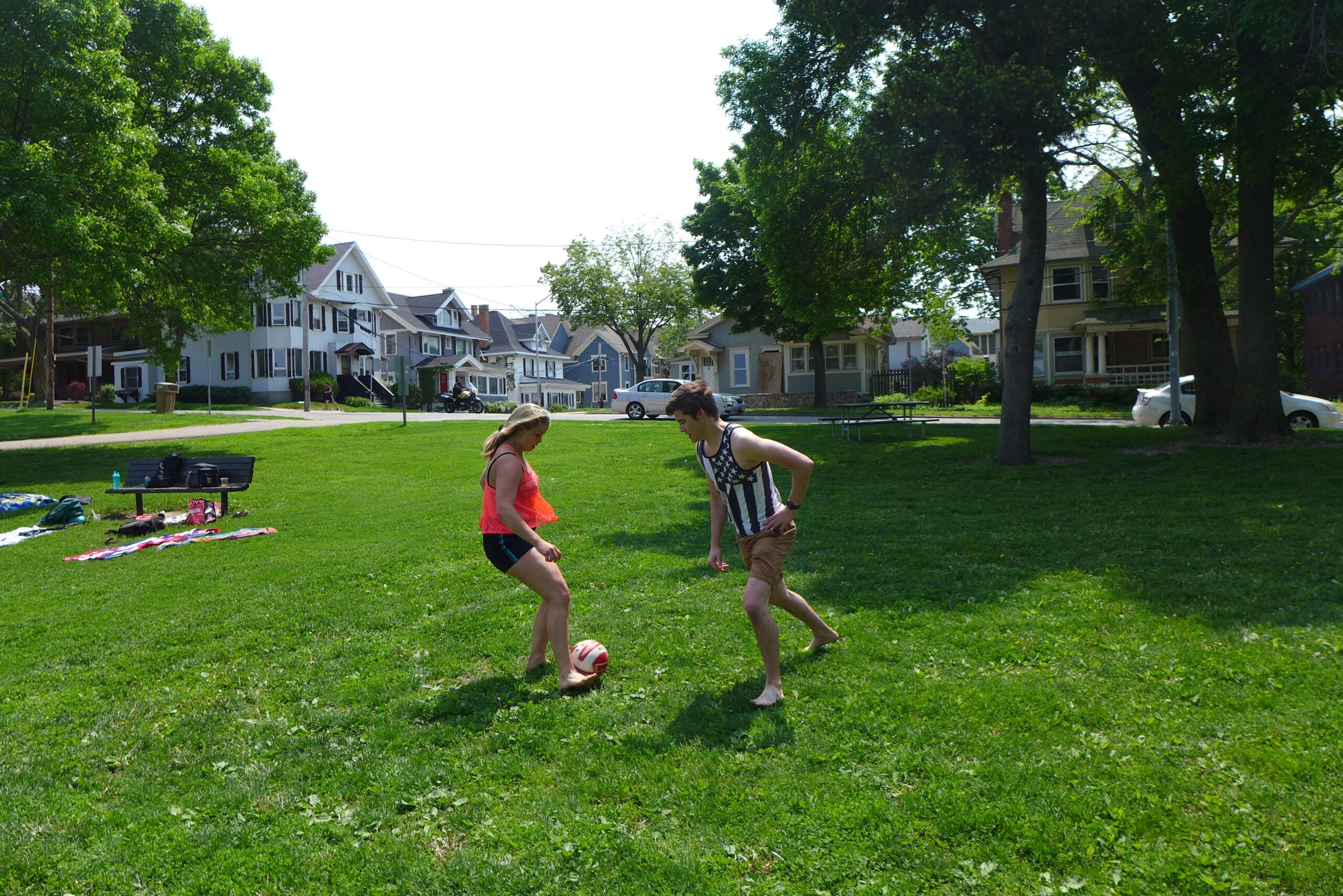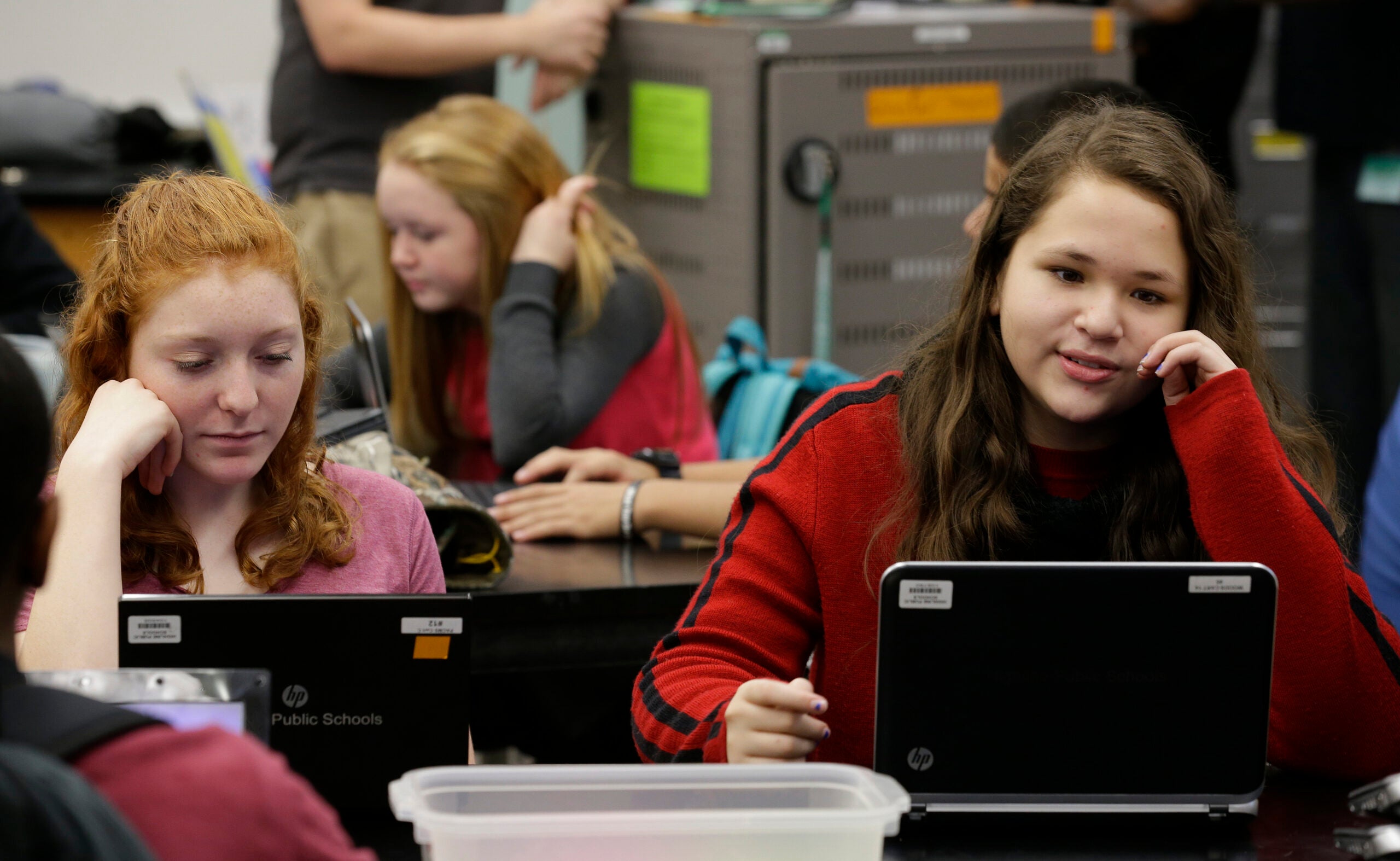The playground is a great place for kids to socialize and form friendships, but those processes can be more difficult for students who have challenges with speech.
Those students often have electronic devices to help them communicate in the classroom, but they’re not as functional on the swing set.
Earlier this year at Central Elementary School in Rhinelander, speech therapist Maddie Sowinski helped install a “communication board” on a playground fence to help nonverbal students connect with their peers.
News with a little more humanity
WPR’s “Wisconsin Today” newsletter keeps you connected to the state you love without feeling overwhelmed. No paywall. No agenda. No corporate filter.
It’s a long vinyl poster that shows symbols and words representing different vocabulary that might come up on the playground. Sowinski told WPR’s “Wisconsin Today” that students can point at the symbols to communicate to their teachers and classmates.
“So a student could make a message saying, ‘I want a drink,’ because it’s really hot out,” Sowinski said. “We have real pictures of our slide, our swings and our tunnel. So if they got hurt on something, they could maybe say, ‘hurt on the swings.’”
The board also has American Sign Language symbols and other words that can apply to the classroom setting, as well.
Sowinski said she’s seeing students of all abilities benefit from having it, not just those with speech difficulties.
“It’s really helping with some of those peer interactions that we try and target at the younger age,” she said. “Turn-taking and social interactions are something that we’ve seen really take off and benefit from our board on the playground.”
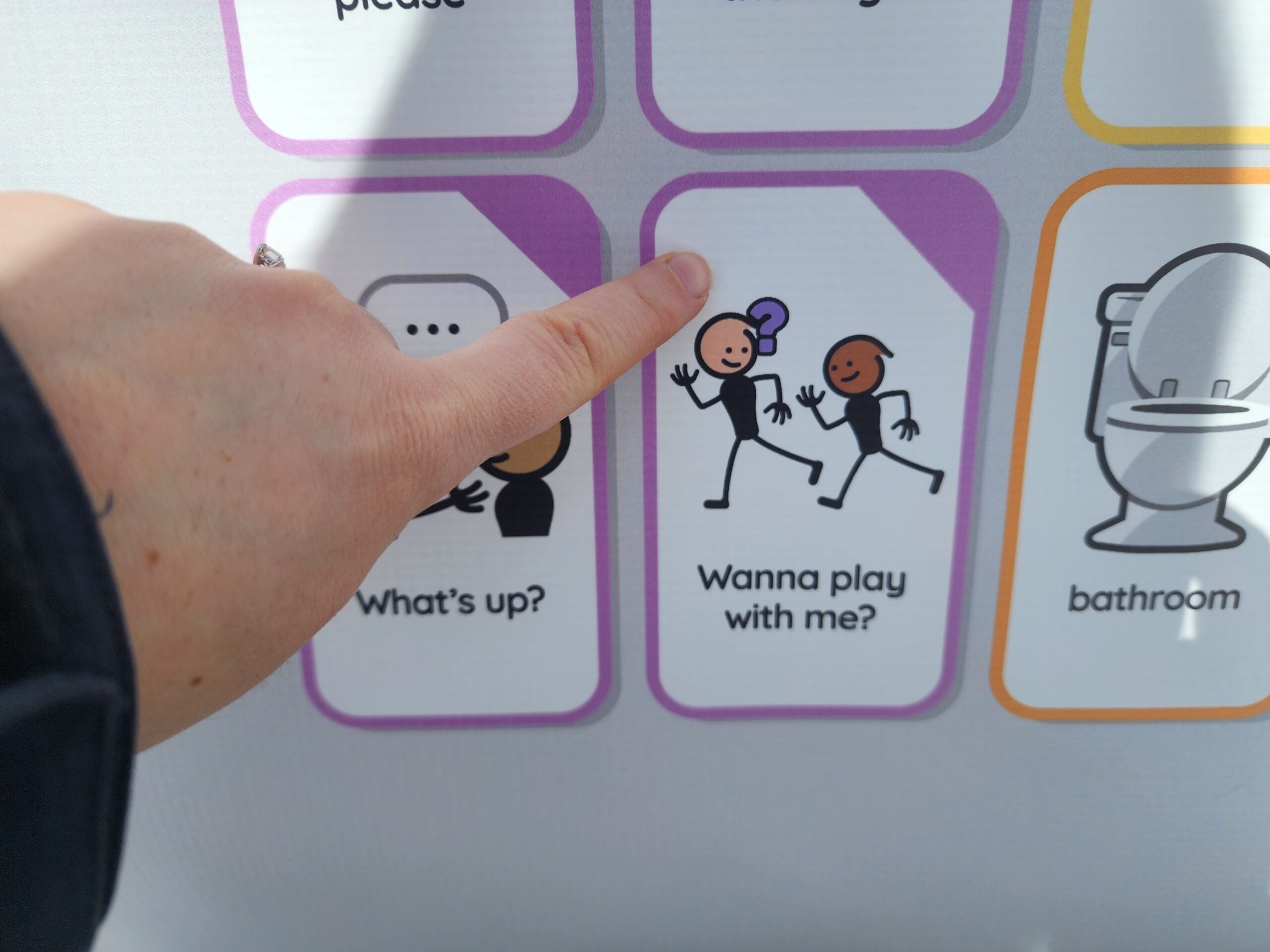
Meeting students’ needs
Having these types of communication tools is critical for students’ participation in the classroom and the development of social relationships, said University of Wisconsin-Oshkosh special education professor Denise Clark.
Tools like nonverbal speech boards can aid in multiple facets of a student’s development, and she told “Wisconsin Today” that opening up these lines of communication benefits everyone involved.
“Research shows us that there are greater gains, both for students with and without disabilities, when students all learn together,” Clark said. “Special education is a support, as are the related services, and they don’t have to be in a different place. We can have all of the students learn together.”
These types of tools can also help students who are deaf or hard of hearing, as well as those learning English as a second language. Having them in the classroom or playground benefits parents or visitors who might have disabilities, too.
Clark said it’s important for educators to integrate these tools for students at an early age, so they don’t get judged or stigmatized for having different needs and abilities.
That early exposure helps make it more ubiquitous for kids.
“As students get older, they see that as a typical part of their world, rather than when they’re adults, and they’re like, ‘Oh, why is that person using this or that?’” Clark said. “They already see a range of communication and ways of being in the world that allow for the participation of everyone in the community.”
She’s encouraged by what she’s seeing at places like Central Elementary being proactive in accessibility for its students.
Clark said teachers are often managing a lot of students with limited resources, and even small changes can go a long way.
